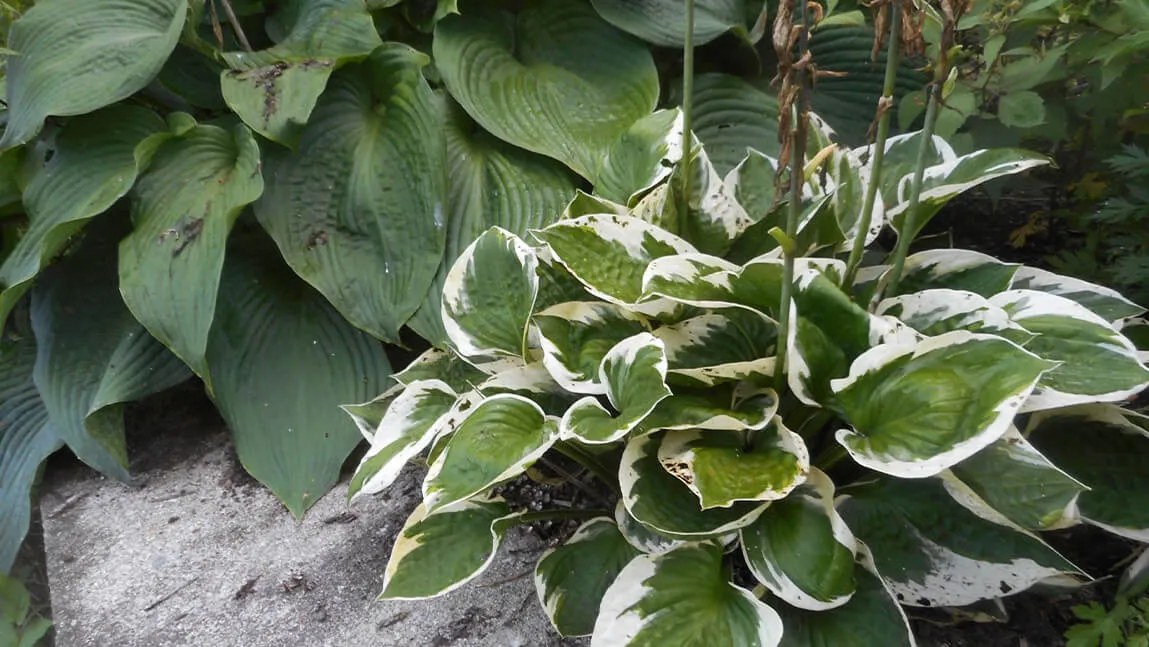By Deborah J. Benoit
Extension Master Gardener
University of Vermont
Do you grow hostas? Even if you don't know them by name, you'll likely recognize their neat, rounded form in the garden. Hardy in U.S. Department of Agriculture plant hardiness zones 3-8, they're popular as a reliable, easy maintenance choice.
Low light? No problem. Hostas grow and flower happily in conditions from part to full shade and can tolerate sunny spots in northern states.
Even if you're familiar with hostas and grow them in your own garden, you may not be aware that the leaves and flowers are edible. That's right. Hostas are not just another pretty plant.
Taste test in the spring when the new leaves emerge. Shoots are tender and tasty and often compared to asparagus, not a surprise since hosta and asparagus are both members of the same family (Asparagaceae).
To harvest hostas, cut the shoots off near the soil. Wash and dry them as you would any other vegetable harvested in your garden. The shoots can be added to salads or fried with a bit of butter and garlic and served as a vegetable side dish. Or you could wrap them in bacon and roast in the oven.
With so many possibilities, you might consider adding hostas to your garden this fall to harvest in the spring. And if you already grow them, you could give the leaves a try now.
Once the leaves unfurl and mature, they become tougher and take on a bitter taste. They can be chopped and boiled or steamed to add to soups, stews or dishes taking the place of spinach or other greens.
Hostas flower in late summer, sending up scapes with trumpet-shaped flowers. The white or purple flowers are an attractive addition for several weeks to an already decorative plant. And they, too, are edible.
Fresh hosta flowers have a nice crunch and a flavor similar to lettuce. They can be used as you would any edible flower, added to a salad or used as a garnish.
A few words of caution. If you plan on nibbling the hostas in your garden, care for them as you would any other food crop. Be sure any hostas you intend to eat have not been treated with any pesticides or potentially poisonous chemicals. And please don't share your culinary creations with your dog or cat because hostas are toxic to them.
Hostas are fairly problem-free with the exception of slugs. These pests can cause large, irregular holes in the foliage and are active when temperatures are above 50 degrees Fahrenheit and conditions are moist.
Cultivars, depending on leaf thickness, can vary for their susceptibility to slugs. To deter these night-feeding pests, you can use several organic methods. For information on slugs and snails, go to https://go.uvm.edu/slugs.
Finally, fall is a fine time to add hostas to your garden, and you just might find end of season sales at your local nursery. When planting, select a location where the soil drains well with enough room for your plant when it's full grown. Hostas should be planted several weeks prior to the ground freezing to allow time for the plant's roots to get established.
Once temperatures dip below freezing consistently, hostas die back to the ground. When the ground thaws and temperatures are reliably above freezing again in spring, watch for the appearance of the new season's growth and enjoy those tasty treats.
For more information on growing hostas, check out this University of Vermont Extension article, "The How-To of Hostas," by Dr. Leonard Perry at https://go.uvm.edu/hostas.
Deborah J. Benoit is a UVM Extension Master Gardener from North Adams, Massachusetts, who is part of Vermont's Bennington County Chapter.
